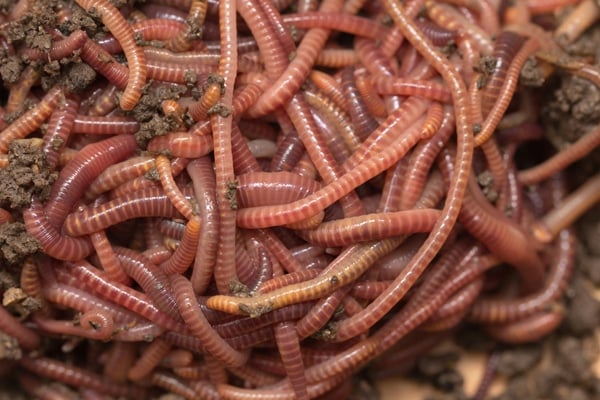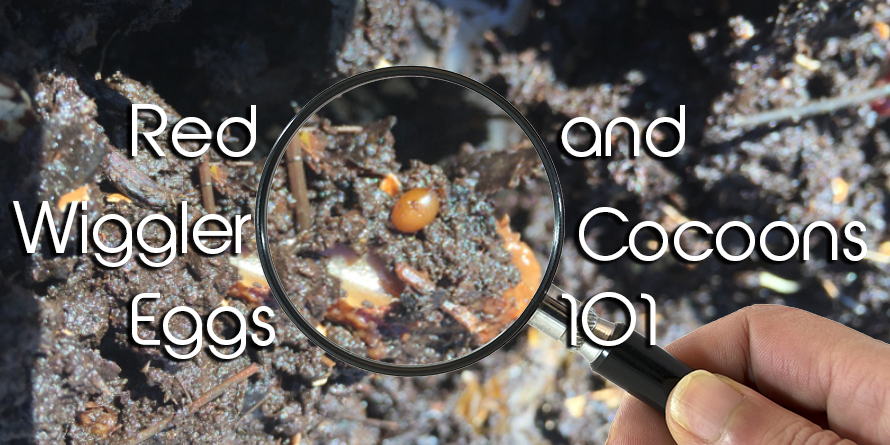Red Wigglers: The Unsung Heroes of Organic Waste Recycling
Red wigglers, or Eisenia fetida, function as crucial representatives in the natural waste reusing procedure, transforming discarded materials into important vermicompost. Their effective breakdown of organic matter not only boosts soil quality but also adds to lasting waste management practices. As the world increasingly looks for services to combat waste build-up and boost farming performance, understanding the role of these worms becomes essential. What systems enable them to prosper in compost settings, and how can they be efficiently utilized in both residential and commercial settings? Exploring these concerns reveals the more comprehensive effects of vermicomposting in our eco-friendly landscape.
What Are Red Wigglers?
The exceptional strength of red wigglers, medically referred to as Eisenia fetida, underscores their vital function in organic waste recycling. These small, reddish-brown earthworms are generally discovered in breaking down natural matter, such as compost heap and manure stacks. Lake Hickory Bait. Unlike other earthworm types, red wigglers thrive in nutrient-rich atmospheres and are highly effective at breaking down natural materials, making them crucial for vermicomposting

(Red Wiggler Express)In addition to their function in waste decrease, red wigglers contribute to dirt health by improving soil structure and aeration with their delving tasks (Lake Hickory Bait). Their presence in composting systems not only improves decomposition rates however likewise advertises a sustainable strategy to waste management, illustrating their significance in ecological preservation initiatives
Advantages of Composting With Worms
Composting with worms, especially red wigglers, uses countless benefits that boost both waste monitoring and dirt health and wellness. Initially, these worms effectively damage down organic waste, converting it into nutrient-rich vermicompost that enriches dirt. This procedure increases decay, permitting a much faster recycling of cooking area scraps and other organic materials contrasted to typical composting approaches.
Furthermore, the vermicompost created by red wigglers is brimming with helpful microbes, which help boost dirt structure, aeration, and moisture retention. This boosts the general health and wellness of plants, advertising vigorous development and boosted yields in yards and agricultural settings. Additionally, using worms in composting decreases the production of greenhouse gases, such as methane, adding to a more lasting waste management system.

Just How to Beginning Vermicomposting
Establishing a vermicomposting system is a straightforward procedure that can produce considerable advantages for both waste monitoring and dirt enrichment. To start, pick a suitable container, such as a plastic bin or wooden box, with sufficient ventilation openings to make certain correct air movement. The measurements need to preferably be about 2 feet by 3 feet, allowing ample space for the worms to thrive.
Next, prepare bedding material, which can consist of shredded newspaper, cardboard, or coconut coir. This bedding must be dampened to develop an ideal environment for the worms. As soon as the bed linen is in place, introduce red wigglers (Eisenia fetida) right into the container, typically around one pound of worms for each square foot of surface area.
Following the placement of worms, add organic waste, such as fruit and veggie scraps, coffee grounds, and crushed eggshells. With these actions, you will successfully launch a vermicomposting system that adds to sustainable waste monitoring and enhances your soil.
Maintaining a Healthy And Balanced Worm Bin
(Red Wiggler Express)Keeping a worm container thriving needs normal attention and treatment to guarantee the wellness of the red wigglers and the efficiency of the composting procedure. Appropriate maintenance starts with keeping track of the dampness levels; the container must be damp however not saturated. A good regulation of thumb is to keep a consistency comparable to a wrung-out sponge.
Carefully blending the bed linens and food scraps Check This Out every few weeks stops compaction and makes certain that all worms have access to oxygen. Additionally, it is essential to feed the worms properly.
If the container ends up being also hot or cold, the worms might come to be worried. By faithfully handling these aspects, one can maintain a durable and effective worm container.
Effect On Sustainable Living
The effective maintenance of a worm bin not only profits the health and wellness of red wigglers but also contributes substantially to lasting living techniques. By recycling organic waste, such as kitchen area scraps and backyard debris, red wigglers help draw away substantial quantities of material from landfills. This decrease in waste not just reduces greenhouse gas emissions yet also minimizes the ecological problem connected with waste monitoring.
In addition, the castings produced by red wigglers function as a nutrient-rich organic plant food, improving dirt health and wellness and promoting plant development. This natural choice to chemical fertilizers supports lasting agriculture and horticulture practices, lowering reliance on artificial inputs that can harm ecological communities. Furthermore, worm composting cultivates understanding of waste monitoring, urging individuals and areas to adopt even more lasting practices.

Conclusion
In summary, red wigglers serve as important factors to organic waste recycling with their effective decay of organic materials. Their capability to create nutrient-rich vermicompost improves soil health and wellness and supports sustainable agricultural practices. By integrating vermicomposting into waste management strategies, people and areas can significantly reduce waste while advertising ecological sustainability. The function of Eisenia fetida in promoting healthy environments highlights the significance of these organisms in attaining lasting living and improving soil fertility.